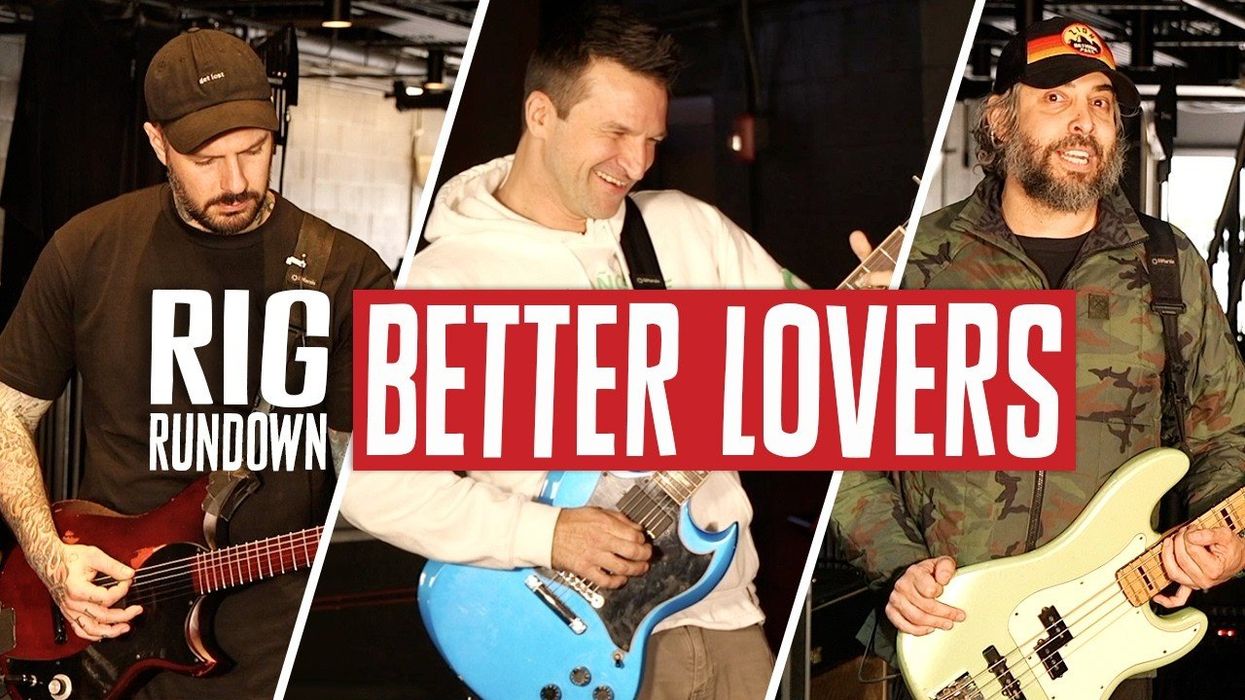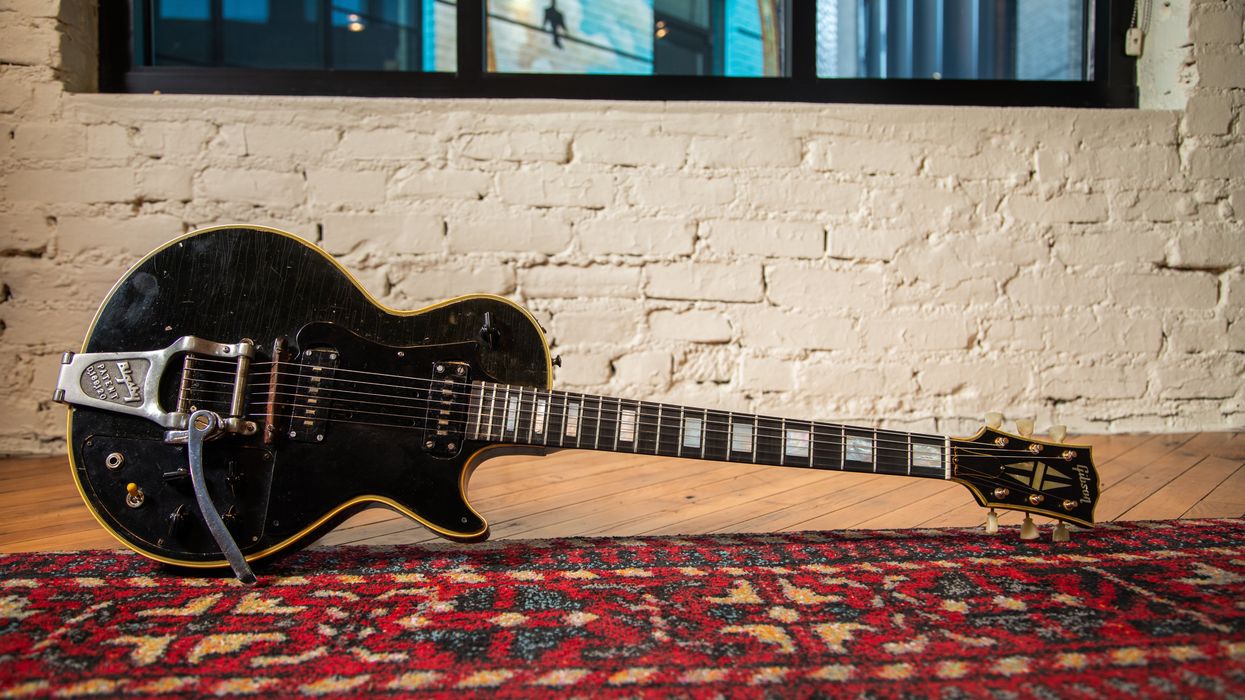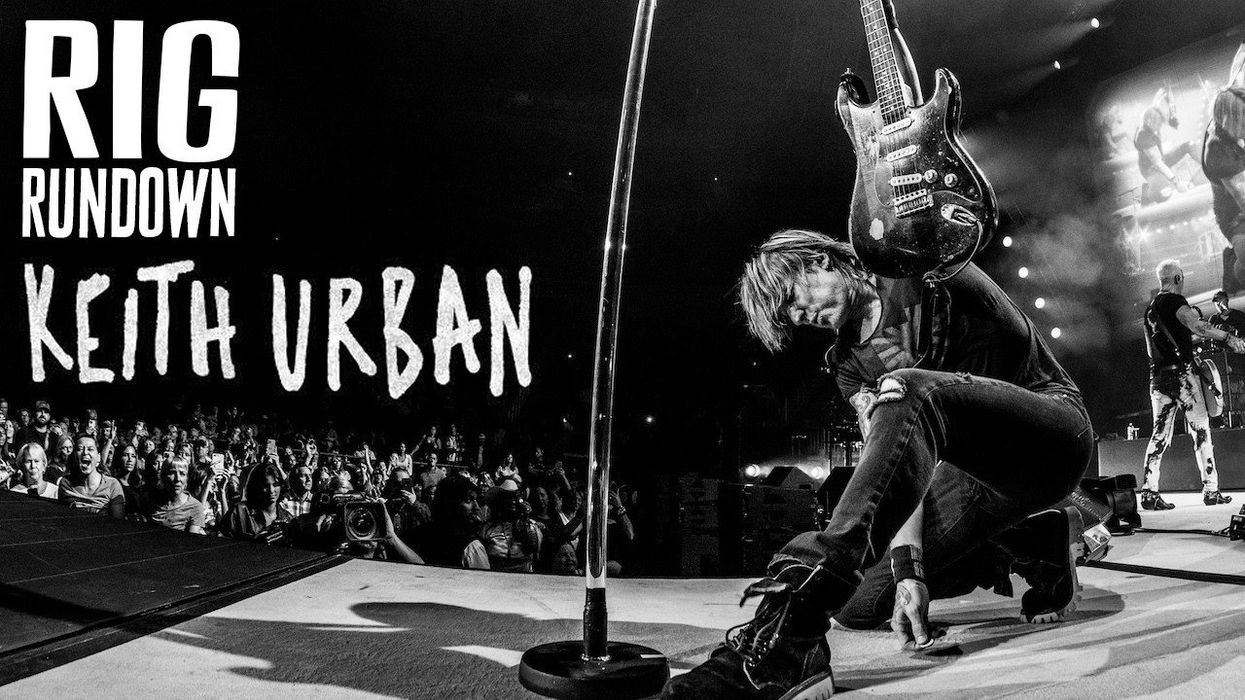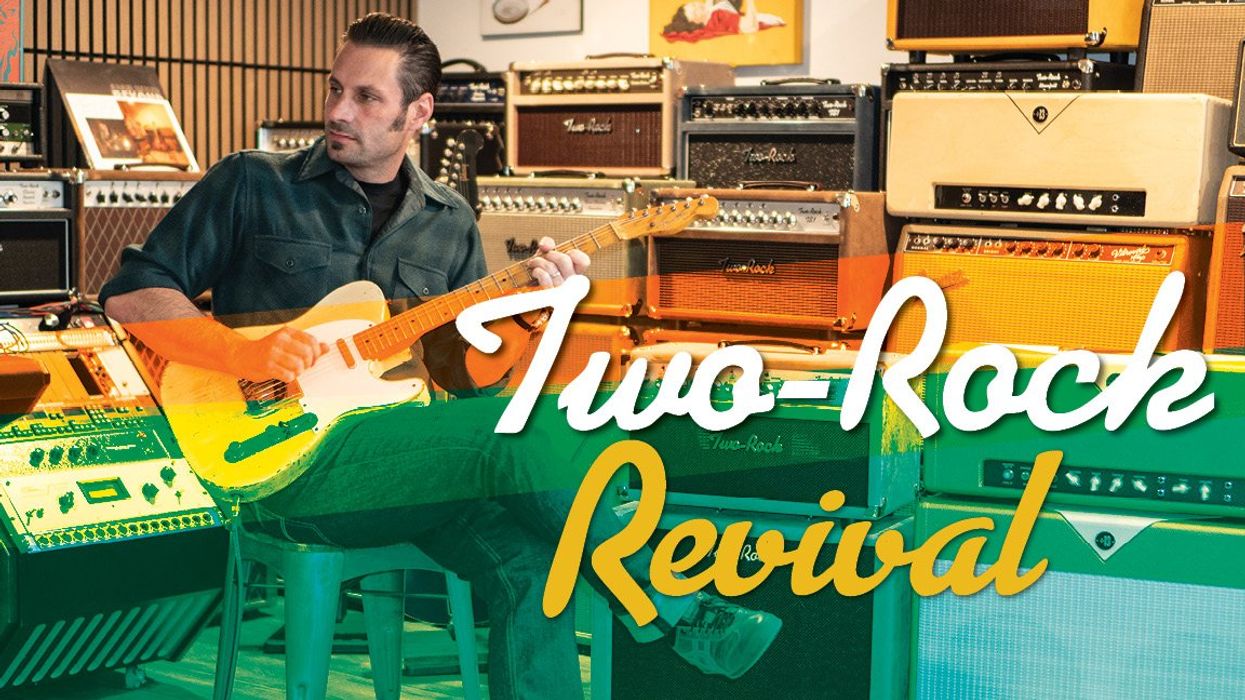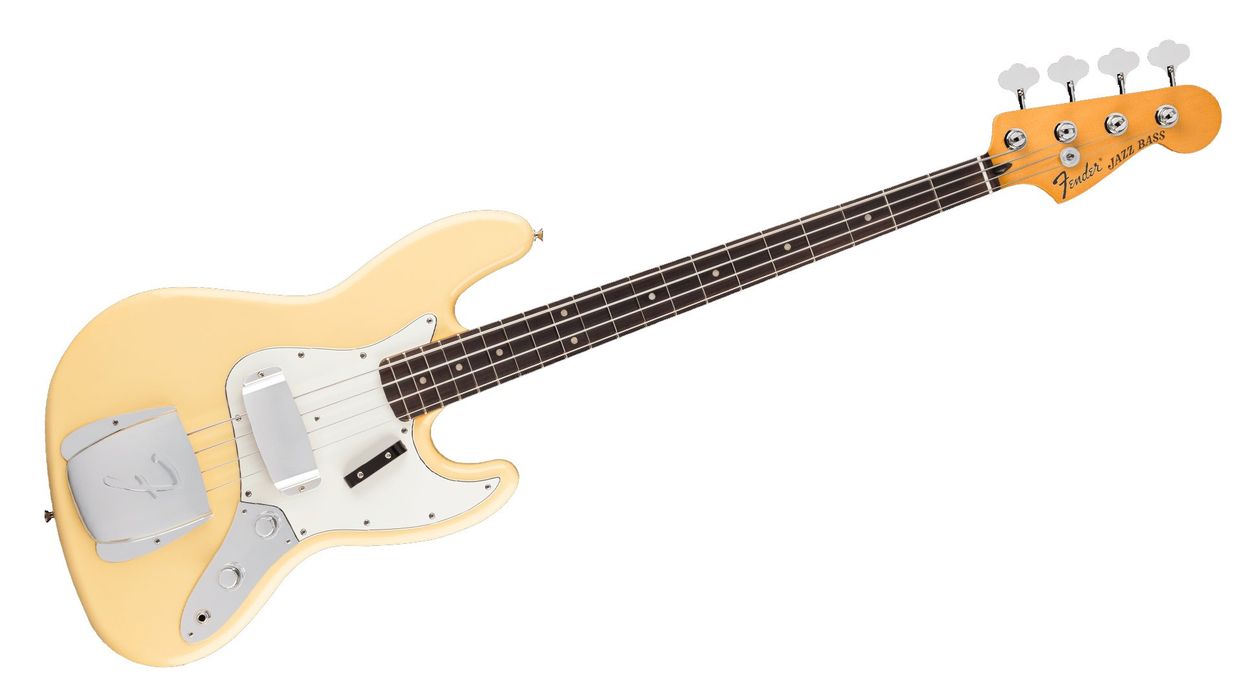Theory: Intermediate
Lesson Overview:
• Ramp up your picking speed.
• Learn the basic elements of death metal rhythm guitar.
• Develop riffs that combine dissonance, chromaticism, and atonal elements.
Click here to download a printable PDF of this lesson's notation.
In our previous metal lesson, we examined the melodic style that emerged in and around Gothenburg, Sweden. This time let's focus on a style that—even though it originated in the States—isn't associated with any particular region.
Brutal death metal has very active and growing underground scenes in all of Europe, the U.S., Southeast Asia, and Russia, largely thanks to the recent emergence of slam death metal, which focuses on slower so-called “slam" parts. Right now, it's probably the most vibrant underground metal genre with local scenes being connected internationally and many fans traveling to different countries to catch as many festivals as possible.
Named after its thematic focus on extreme violence and relentlessly ferocious music, the style emerged in the U.S. in the early '90s. In particular, the band Suffocation are considered to have delivered the blueprint of what would become brutal death metal on their 1991 debut Effigy of the Forgotten. Mixing violent lyrics inspired by Cannibal Corpse with a raw, yet technical delivery influenced by grindcore and New York hardcore, the album was not received well by critics when it was released. However, it became a cult classic that defined the genre. Brutal death metal's building blocks are atonal riffs, relentless speed that's only occasionally interrupted by slow, hardcore-derived slam/breakdown parts, and unconventional song structures. This is paired with indecipherable guttural and so-called “pig squeal" vocals.
All but one of the examples in this lesson are tuned down to B standard (B–E–A–D–F#–B), which is common for many bands in this genre. Disclaimer: You can use either a 6- or 7-string guitar for these examples. However, if you choose the latter, keep in mind that the 3rd string on a 7-string is usually tuned to G (B–E–A–D–G–B–E). To match the 6-string tuning we use in this lesson, you will either need to tune your 3rd string down to F# or adjust your fingering.
Most bands use modern high-gain tube amps, so I'd recommend a Peavey 5150/6505, Mesa/Boogie Rectifier, or whatever high-gain amp, or simulation, you can get your hands on. In the early days, most bands used solid-state amps like a Marshall Valvestate. These solid-state amps produced a sludgy, slightly muddy high-gain tone that gave the early recordings a lot of their raw charm.
Now let's dive into the examples. These are inspired by different bands, which I'll reference, but unlike the last installment, they're not meant to represent a band's style. Rather, they illustrate different types of riffs and elements typically used by brutal death metal bands.
Ex.1 shows the use of tremolo picking as heard in early Suffocationrecords. It is relatively fast and requires a warmed-up picking hand. As with most music in this genre, the riff is atonal and uses a lot of chromatic movement. Some emphasis is put on minor seconds and the tritone to create a dark, dissonant melody.
Click here for Ex. 1
Let's dig into another Suffocation-inspired riff (Ex. 2) that uses similar atonal chromaticism. It focuses again on minor seconds and tritones, but adds some leaps of a third when switching strings. This fast galloping rhythm would either be accompanied by a slower half-time beat or a blast beat.
Click here for Ex. 2
Now we'll raise the tempo a little. Ex. 3 is a bit longer and inspired by Gorgasm. Anything that isn't 16th-notes can be downpicked to get a tight aggressive sound or alternate picked for a messier, less-defined sound. Gorgasm was known for downpicking a lot of their stuff, while bands like Dying Fetus would use alternate picking for fast eighth-note power chords.
The riff is not easy at this tempo. Take your time working up to those speeds to avoid hurting your muscles. It's an atonal riff that shows a few different aspects: The use of power chords and inverted power chords to add dissonance, fast-paced riffs to create a chaotic violent feel, and the extreme speeds that some bands rely on. (As a matter of fact, Gorgasm and other bands often play even faster.)
Click here for Ex. 3
Ex. 4 is a well-deserved break for the picking hand and shows a groovy, heavy slam riff inspired by Devourment. As in the previous examples, it relies on atonal, chromatic ideas, but features inverted power chords to add some dissonance and make the chordal playing flow a bit easier. Think of it as moving around power chords in drop tuning.
Click here for Ex. 4
Inspired by Dying Fetus, Ex. 5 is another type of slam riff that's heavily influenced by the breakdowns used in hardcore bands. The open 6th string serves as a kind of pedal tone around which power chords move chromatically.
Click here for Ex. 5
Ex. 6 is another Dying Fetus-inspired riff that shows the more technical side of the genre by using fast, chromatic pull-offs combined with tapping and a sweep at the end. The riff is loosely based around a B key center with the open 6th string again serving as a pedal tone that gives the riff a rooted feeling. The pull-offs are all based around a minor third and move chromatically. The tapped note is derived from the E° arpeggio (E–G–Bb). The arpeggios at the end of the riff break with the 16th-note gallop feel and are played in triplets. It's a Bm arpeggio (B–D–F#) that moves up a tritone to an Fm arpeggio (F–Ab–C). The sweep is meant to be played somewhat slurry. It's just supposed to add some chaos to the riff, but if you want to go clean and technical on it that's cool, too.
Click here for Ex. 6
Ex. 7 shows a riff inspired by Deeds of Flesh, whose guitarist, the late Erik Lindmark, had an immense influence on the scene. He was not only an incredible player, but he started Unique Leader Records, an important label that supported other bands in the scene. The riff has a triplet feel that balances palm-muted, inverted power chords with faster tremolo-picked notes that move downward chromatically. (Unlike the other examples, this is notated in standard E–A–D–G–B–E tuning.)
Click here for Ex. 7
The fast eighth-note riff in Ex. 8 is typical of many brutal death metal bands and is usually accompanied by a blast beat that matches the guitar. This leads to a machine gun-like unison sound. Harmonically, we again find chromaticism, tritones, minor thirds, and minor seconds.
Click here for Ex. 8
Blast but not least, Ex. 9 shows another riff inspired by Suffocation. This is a pedal-tone riff where the power chords move around and the pedal note changes to fit the power-chord harmony.


